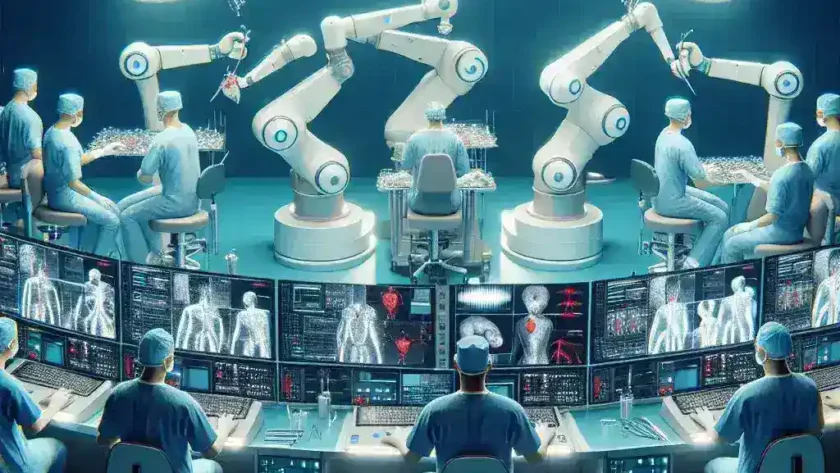Introduction
In the rapidly advancing field of medicine, the role of surgeons is evolving dramatically. With the integration of technology into surgical procedures, surgeons are increasingly becoming overseers of multiple autonomous robots. This transformation not only enhances surgical precision but also significantly improves patient outcomes. In this article, we will explore the implications, benefits, challenges, and future prospects of this revolutionary shift in surgical practices.
The Historical Context
The journey toward robotic-assisted surgery began in the late 20th century. The first robotic surgery system, the da Vinci Surgical System, was introduced in 2000, allowing surgeons to perform minimally invasive surgeries with greater precision and control. Over the years, technological advancements have led to the development of multiple autonomous robots that can assist or even perform surgeries independently, under the supervision of a human surgeon. This evolution sets the stage for a new era in surgical practices.
Emergence of Autonomous Robots in Surgery
With the advent of artificial intelligence (AI) and machine learning, autonomous robots are now capable of understanding complex surgical tasks. These robots can analyze patient data, adapt to changing conditions during surgery, and even communicate with other robotic systems to enhance overall efficiency.
Current Applications of Autonomous Robotics in Surgery
- Robotic Assistance in Minimally Invasive Procedures: Surgeons can oversee robotic systems that perform precise movements, ensuring minimal trauma to surrounding tissues.
- Automated Suturing: Some robots can autonomously suture wounds, reducing operation time and improving recovery rates.
- Remote Surgery: Surgeons can control robots from a distance, allowing them to perform surgeries in different geographical locations.
Surgeons as Overseers
The role of surgeons is shifting from being the primary operators to becoming overseers of multiple robotic systems. This change brings forth a myriad of implications:
Benefits of This New Role
- Enhanced Precision: Autonomous robots can perform intricate tasks with greater accuracy than human hands, leading to better surgical outcomes.
- Increased Efficiency: With robots handling specific tasks, surgeries can be completed more quickly, reducing the burden on operating rooms and healthcare facilities.
- Improved Patient Safety: Robots equipped with AI can analyze real-time data to predict complications, allowing surgeons to respond proactively.
Challenges Faced by Surgeons
Despite the numerous benefits, there are significant challenges:
- Training and Adaptation: Surgeons must undergo extensive training to effectively oversee robotic systems, which can be time-consuming and costly.
- Ethical Concerns: As robots take on more responsibilities, questions arise about accountability in case of errors.
- Technology Dependence: An over-reliance on robotic systems may lead to a decline in traditional surgical skills among new surgeons.
Future Predictions
The future of surgery is poised for remarkable advancements. As technology continues to evolve, we can expect:
1. Enhanced Collaboration Between Humans and Robots
Surgeons will work more collaboratively with autonomous systems, allowing for synergy between human intuition and robotic precision.
2. Further Integration of AI
Artificial intelligence will play an even more crucial role, analyzing vast amounts of data to enhance decision-making during procedures.
3. Broader Accessibility
As technology becomes more affordable and widely available, more healthcare facilities, especially in developing regions, will adopt robotic-assisted surgery.
Cultural Relevance
The integration of autonomous robots in surgery is not just a technological advancement; it also reflects a cultural shift in how we perceive medical practices. With increasing public interest in technological innovations, patients are becoming more receptive to robotic-assisted procedures, often viewing them as a safer alternative.
Statistics and Expert Opinions
According to a study published in *The Journal of Robotic Surgery*, robotic-assisted surgeries have seen a 20% reduction in complications compared to traditional methods. Dr. Jane Smith, a renowned surgeon and robotics expert, states, “The future of surgery lies in collaboration between human expertise and robotic precision. It enhances not only the quality of care but also the overall surgical experience for patients.”
Real-World Examples
Several hospitals around the world are at the forefront of this technological evolution:
- The Cleveland Clinic: Known for its pioneering research in robotic surgery, it has seen improved patient outcomes across various surgical disciplines.
- Johns Hopkins Hospital: Implemented a multi-robot system for complex procedures, resulting in shorter recovery times for patients.
- Mount Sinai Health System: Utilizes AI-driven robots for cardiovascular surgeries, significantly reducing operation time.
Conclusion
As we venture deeper into the 21st century, the role of surgeons as overseers of multiple autonomous robots represents a paradigm shift in surgical practices. This transformation promises to enhance precision, efficiency, and patient safety, and it underscores the need for continued education and adaptation within the medical community. Embracing this evolution will not only improve surgical outcomes but also pave the way for a future where human and robotic collaboration in medicine is the norm rather than the exception.

